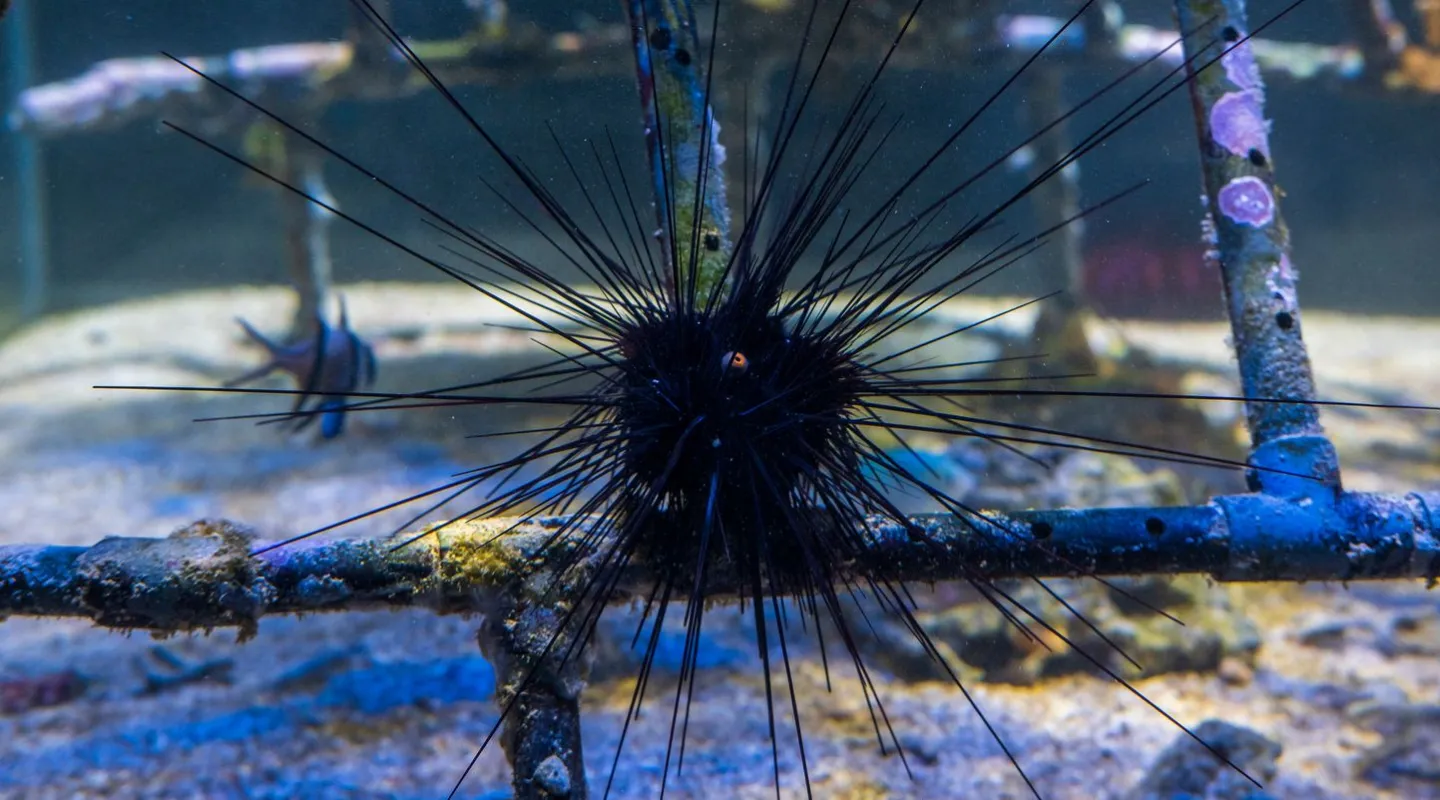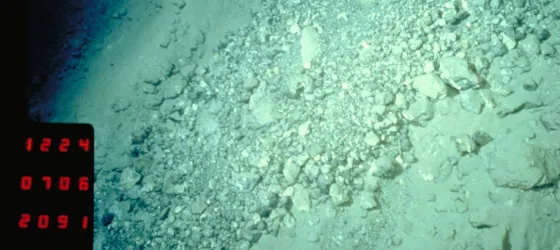The sea urchin provides shelter for many animals such as gobies, cardinalfish, shrimps and even some jellyfish. The Banggai cardinalfish also hides in its spines to protect itself from potential predators.

Identity card
sea urchin
- Scientific name:
- Diadema setosum
- Family:
- Diadematidae
- Class:
- Echinoidea
- Phylum:
- Echinodermata
- Year of description:
- Leske, 1778
- IUCN Status:
- Not Evaluated
- CITES-status:
Not Evaluated
- Distribution:
-
Red Sea, Indian Ocean, Pacific Ocean as far as Polynesia and from southern Japan to Australia
- Habitat:
-
It lives at shallow depths in lagoons.
- Size:
It measures about 10 cm including its legs and has a shell measuring 3 cm. It looks similar to a spider.
- Diet:
-
Encrusting algae and organic matter.







